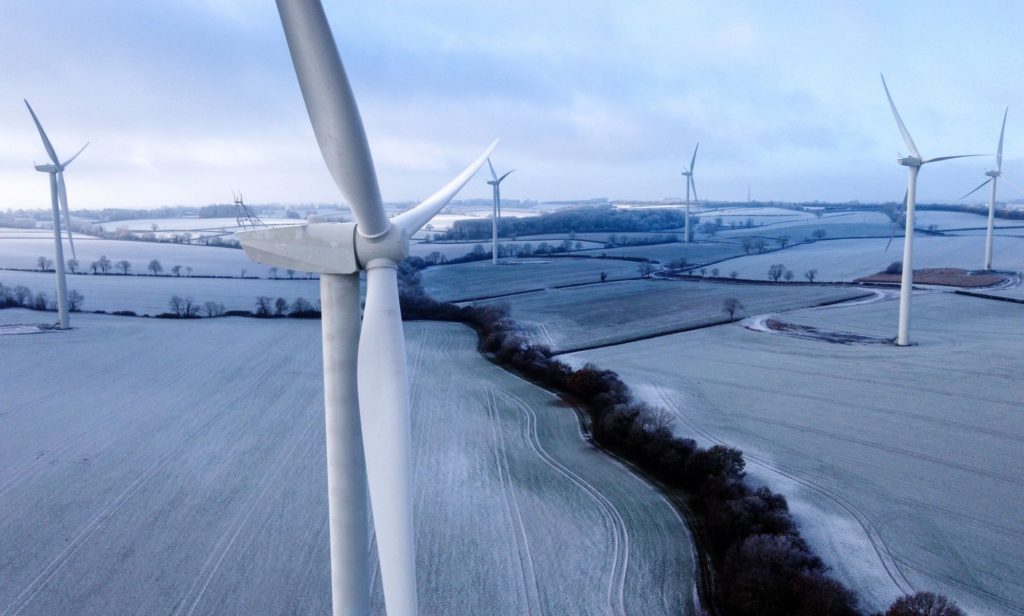Britain’s wind farms generated a record amount of electricity this year as gusty weather and a growing fleet of turbines softened the impact of soaring natural gas prices.
(Bloomberg) — Britain’s wind farms generated a record amount of electricity this year as gusty weather and a growing fleet of turbines softened the impact of soaring natural gas prices.
Wind power will be a critical factor in how well Europe manages an energy crisis that’s already cost more than $1 trillion. Higher wind speeds will ease the need to burn gas that’s been in scarce supply since Russia cut flows to Europe following its invasion of Ukraine. Building more wind farms will allow the UK to cut gas use and reach its climate goals.
The UK has some of Europe’s best wind conditions and the most turbines deployed at sea, where gusts tend to be stronger and more consistent. Britain’s wind farms produced nearly 74 terawatt hours so far this year, enough to power more than 19 million British homes, according to National Grid data. That exceeded the previous record of 68 terawatt hours set in 2020.
The record production was boosted by the addition of a number of major offshore wind farms. Next year will see at least one more entering into service, with the 1.1-gigawatt Seagreen project from SSE Plc and TotalEnergies SE set to begin operating in the summer.
In the coming years, records should fall regularly as the UK moves closer to a goal of reaching 50 gigawatts of offshore wind capacity by the end of the decade, over triple the amount today. Onshore wind farms could also see higher growth in the coming years after Prime Minister Rishi Sunak moved to lift a de-facto ban on their development in England.
Even with more capacity, there will be periods when the wind doesn’t blow. That happened last week during a period of freezing temperatures, forcing plants that burn natural gas to plug the gap. But over a longer time frame, wind power will cut fossil fuel demand and conserve inventories.
Forecasts show it’s likely there will be strong wind speeds over Christmas and New Year, times when demand is typically low because many businesses are shut. That could mean wind supplies most of the country’s power needs over the holiday period.
“On a high level, wind power is only good,” said Andreas Gandolfo, analyst at BloombergNEF. “When you have it, you reduce your gas burn. And when you don’t, you do what you were doing before, which is burn gas.”
More stories like this are available on bloomberg.com
©2022 Bloomberg L.P.










